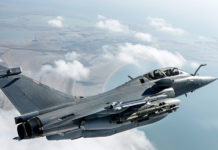The announcement of the winner to provide the next generation fighter for the Brazilian Air Force has been postponed for at least a month, and could be delayed for a year, after the ministry of interior and prosecution have agreed to open an inquiry into the multi-billion-dollar tender in which France, the United States and Sweden are competing. The French news agency Agence France-Presse quoted sources in the spokesman office of the Brazilian interior ministry mentioning the inquiry could last as long as a year. Two days earlier the Brazilian president Luiz Inacio Lula da Silva cancelled the planned announcement on the winner. Originally scheduled for February, the announcement was delayed twice, and now, it has been postponed at least until mid-May.
The selection process drew much criticism in Brazil, due to the conflict between the President Luiz Inacio Lola and Air Force commander General Juniti Saito. Lola has personally negotiated with French president Nicolas Sarkozi who agreed to grant Brazil generous technology transfer, to produce the Omnirole Rafale in-country. The Air Force has preferred the smaller, lighter and cheaper Gripen NG, which was also proposed with generous local production terms that could contribute more to the Brazilian industry.
Saab argued that Gripen produced in Brazil could be more attractive to other Latin American countries, while Rafale could be too costly for most countries in that region. Therefore, Brazil should have to decide between the Rafale, that could maintain Brazil’s technological leading edge, addressing potential threat by Venezuelan Su-30s, and the Gripen which offers a smart, agile fighter that can be used in relatively large numbers, meeting most contemporary threats and, beyond its contribution to Brazil’s armed forces, could also establish its position in the developing Latin American market, thus generating revenues that could offset the initial investment.
One of the primary considerations for the Ministry of defense and presidency is technology transfer and export potential, leaning toward the French Rafale while the Air Force considers life cycle cost, and operability, is favoring the Gripen. AFter the AIr Force selected the three candidates and determined that they all meet the operational requirements, the Ministry of Defense and President consider the final selection to be based on broader national interests, rather then pure economical terms.
Unconfirmed sources published by the Brazilian Folha de S. Paulo daily newspaper claims that France has initially offered 36 Rafales for $8.2 billion, but sweetened its offer to $6.2, while the Gripen was still priced $4.5 billion. Maintenance costs for the aircraft were proposed separately, with Rafale estimated at $4 billion, more than twice the Gripen’s $1.5 billion. The third contender and least likely winner is the Boeing F/A-18E/F which offers a deal for $5.7 with $1.9 billion maintenance and support. France has already established a strategic pact with Brazil, signing deals worth over $12 billion for military helicopters and submarines.
















